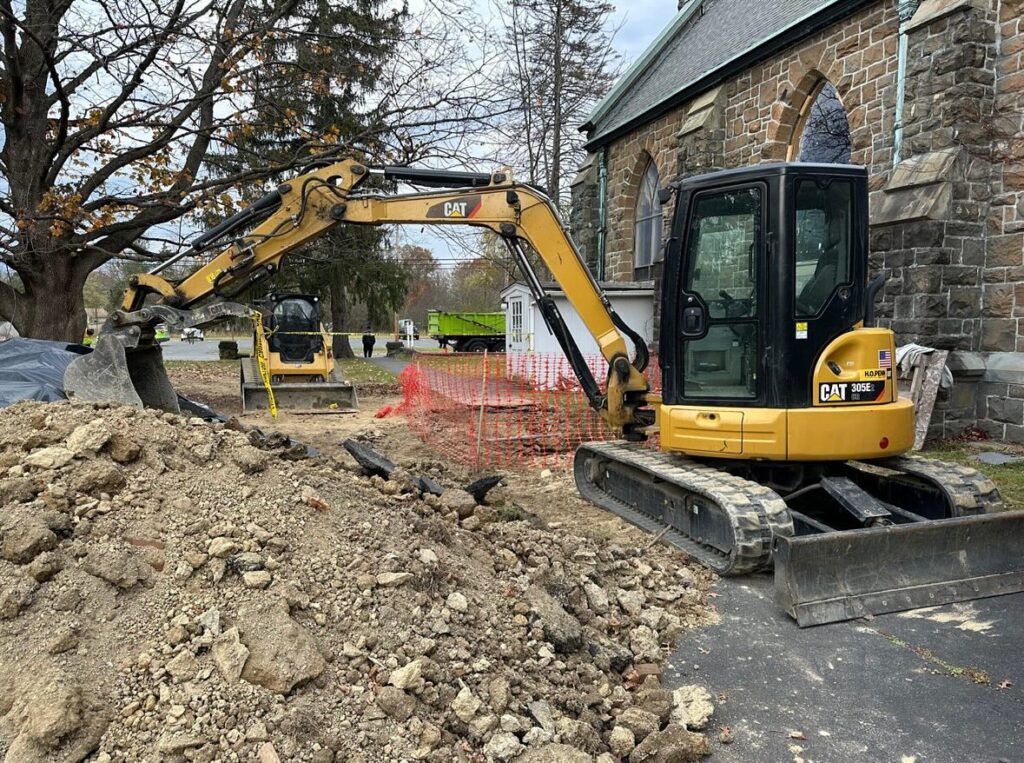Q1: Why is it important to remove an underground oil tank?
A: Underground oil tanks can corrode over time, leading to leaks that contaminate soil and groundwater. Removing an old or unused tank helps prevent environmental hazards, regulatory fines, and costly property damage.
Q2: How do I know if my property has an underground oil tank?
A: Signs of an underground oil tank include:
✔ Fill pipes or vent pipes sticking out of the ground.
✔ Oil stains in the basement or on the ground.
✔ Unexplained fuel odors.
✔ Records indicating past oil heating systems.
If unsure, a tank scan using ground-penetrating radar (GPR) can confirm its presence.
Q3: What is the process for removing an underground oil tank?
A: The oil tank removal process includes:
1️⃣ Site Inspection & Permitting – A professional team assesses the tank location and secures necessary permits.
2️⃣ Tank Pumping & Cleaning – Any remaining oil is safely removed and the tank is cleaned.
3️⃣ Excavation & Tank Removal – The tank is carefully dug out to avoid damaging surrounding structures.
4️⃣ Soil Testing – After removal, soil samples are tested for contamination.
5️⃣ Backfilling & Restoration – The area is refilled with clean soil, and landscaping is restored if necessary.
6️⃣ Regulatory Documentation – A final report is provided to confirm compliance with environmental laws.
Q4: What happens if soil contamination is found?
A: If contamination is detected, a Phase II Environmental Site Assessment (ESA) may be required. This involves:
✔ Further testing to determine the extent of contamination.
✔ Soil and groundwater remediation to remove pollutants.
✔ Regulatory reporting to ensure compliance with environmental laws.
Q5: How long does the oil tank removal process take?
A: The process typically takes 1 to 3 days, but if soil contamination is found, remediation may take additional weeks.
Q6: Do I need to remove an aboveground oil tank as well?
A: While not always required, removing an unused or aging aboveground tank helps prevent leaks, fire hazards, and compliance issues.
Q7: How much does oil tank removal cost?
A: Costs vary depending on tank size, location, and soil conditions but typically range from $1,500 to $3,500. If contamination is found, cleanup costs can increase significantly.
Q8: Can I remove an oil tank myself?
A: No, oil tank removal should be handled by licensed professionals to ensure safety, environmental compliance, and proper disposal.
Q9: How do I choose a reliable oil tank removal company?
A: Look for a company with:
✔ Proper licensing and insurance.
✔ Experience in tank removal and remediation.
✔ Positive customer reviews and references.
✔ Compliance with environmental regulations.
Q10: Why choose C2G for oil tank removal?
A: C2G offers safe, efficient, and environmentally responsible oil tank removal services. Their team ensures proper permitting, expert removal, soil testing, and full regulatory compliance, giving you peace of mind.

